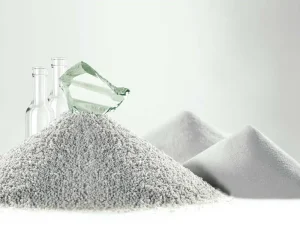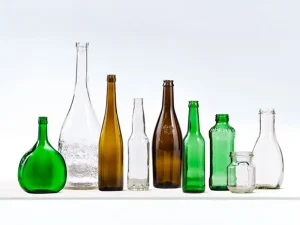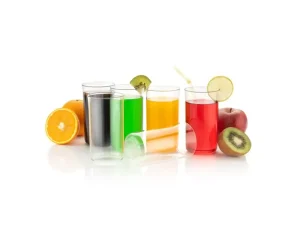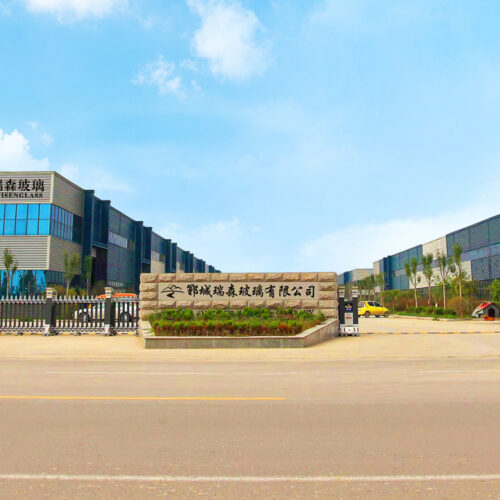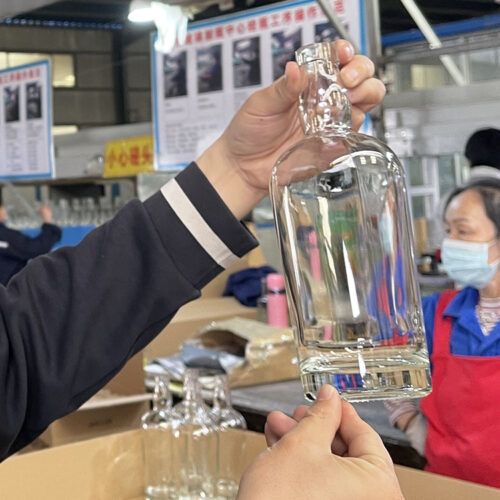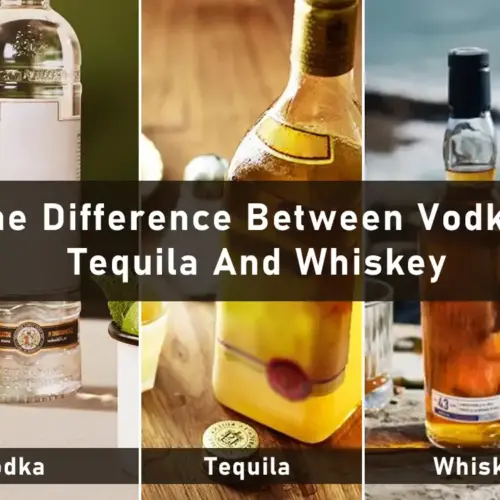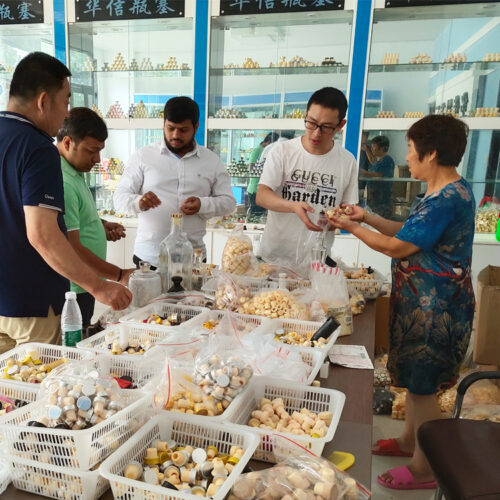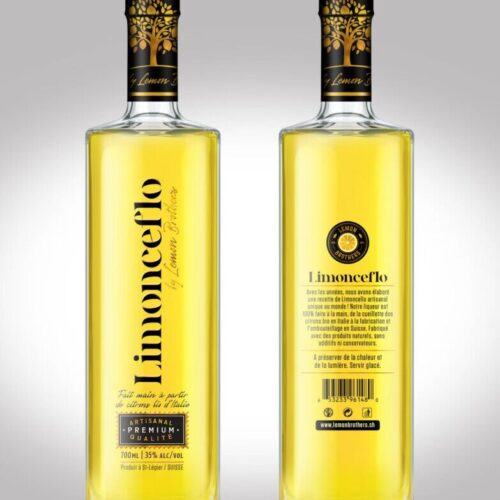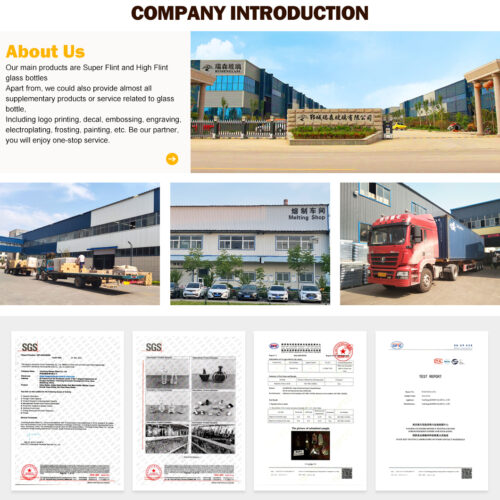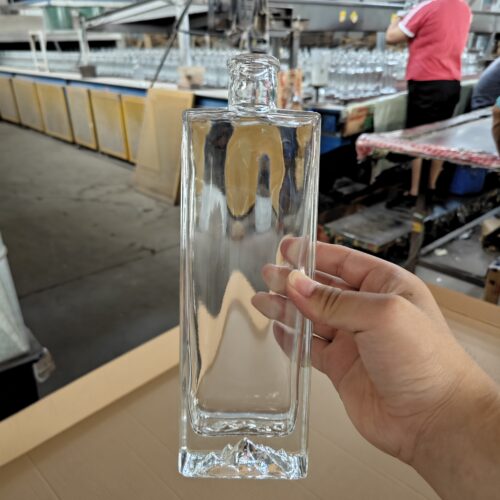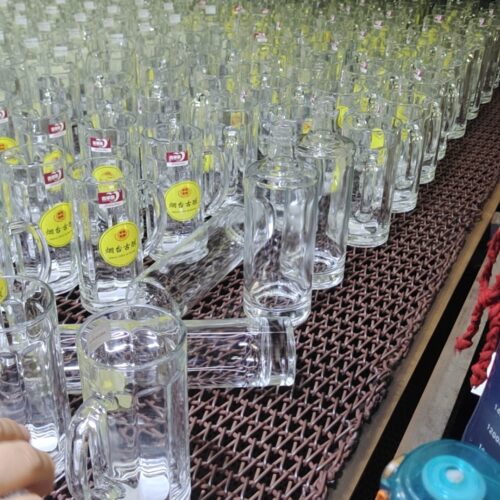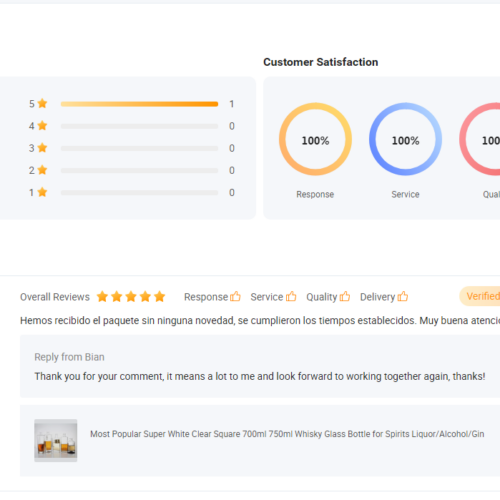Safety is the first parameter that comes to mind when we hear about glass containers, right? Glass is a popular material used to make food packaging. So the question arises: Is all glass food safe for making food and beverage containers? The answer is a mix of yes and no.
As you know, there are different types of glasses available. Most glass is hygienic, non-toxic, and doesn’t leach chemicals into the food. Such glasses are safe for making food and beverage containers. However, some glasses are harmful when used in food containers. In this article, we explore all things related to food-safe glasses. So, let’s get started!
What is Glass and its Ingredients?
Before discussing food-safe glass, let’s first overview the glass itself.
Glass is a transparent material made from three main ingredients. Those include silica (sand), soda Ash (sodium carbonate), and lime (calcium oxide). These ingredients are mixed and heated, and the melted liquid is molded into a specific shape.
Let’s discuss the formation of glass in a more detailed manner. First, the silica, soda ash, limestone, cullet, and additives mixture is prepared. The soda ash lowers the melting point of silica (sand). Without soda ash, melting these mixtures will take a high temperature. It won’t make glass formation less cost-effective.
The limestone enhances the durability, rigidity, and over-strength of glass. These mixtures are heated to around 1700°C (3090°F) in the furnace. As a result, a liquid is obtained from those heating and melting processes. The melted liquid then undergoes the additional process of shaping (molding).
In molding, the liquid is poured into the mold. It then cools down. Upon cooling, the liquid adopts the shape of the mold. As a result, we get a glass of a specific shape. Remember, the shape of the glass is exactly similar to the shape of the mold’s design. Here is the table showing the raw materials and their proportion used in making glass:
| Ingredient | Percentage |
| Silica (Sand) | 70-74% |
| Soda Ash | 12-14% |
| Limestone | 10-12% |
| Cullet (Recycled Glass) | 10-15% |
| Additives or colors | <5% |
Remember, these formed glasses have different properties and types. One glass type may be safe for a food container, and the other may not. It depends on the added additives, impurities, and other factors. Moreover, some manufacturers use color in making glass. It gives the glass a decorative touch.
Is All Glass Food-Safe For Making Food & Beverage?
The answer is it depends on the type of glass. Generally, the glasses used in making food containers are safe and non-toxic. FDA (Food and Drug Administration) only authorizes the use of non-toxic glass. Such glasses don’t leach harmful chemicals into the food.
As you know, preserving the quality and taste of food is key. Moreover, its usability must be safe for human use, right? In such cases, food-safe glass is used. However, not all glasses are food-safe. For example, leaded glass cannot be used to make glass containers.
The reason is that this glass type can release lead oxide into the food when used in containers. As a result, the food can become poisonous. That’s where the role of the FDA (Food and Drug Administration) takes the top responsibility. The FDA is an American agency that regulates foods, drugs, and their quality.
The agreement restricts companies from using material approved for making glasses. Those glasses that are marked as food-safe do not pose any risk. Here is why:
- They don’t leach harmful chemicals into food.
- They are easy to clean when you wash them
- They are hygienic and can be used again and again.
- They are non-reactive to more acidic or alkaline substances
- Their durability is top-notch. They can bear the sudden temperature changes.
In short, all food-safe glasses are 100% safe. This means you can keep your food in them for a long time. However, before choosing any glass, ensure it is marked safe for food. You can check the label attached to the container for information about the glass.
Which Glasses Are Food-Safe For Making Food & Beverage?
In the above portion, I discussed the features of food-safe glasses. But do you know which glasses are food-safe? Let’s dive deeper and explore those glasses.
1- Borosilicate Glass (Type I)
This glass type is the safest for making food and beverage containers. Due to its safety level, it is often referred to as TYPE 1. It is non-toxic and has low thermal expansion. Above all, it is exceptionally stable and doesn’t react with any acidic or basic substance. So, food prepared in borosilicate containers keeps its taste and flavor intact.
Silica (sand) and Boron Oxide (B₂O₃) are the two main ingredients of these glasses. The proportion of silica and borax oxide is 80% and 15%, respectively. A small proportion of other elements, such as soda ash and additives. Remember, it is non-porous. So, it also does not absorb any liquid or flavor from the food.
This type of glass is thermally stable. Containers made with it can easily sustain high- to low-temperature fluctuations. For example, you can keep hot and icy food in this glass container. You can even take such containers from high temperature to very low, and this fluctuation won’t impact their durability.
2- Treated Soda-Lime Glass (Type II)
This is soda-lime glass that underwent an additional surface treatment. Manufacturers treat this glass with sulfur or a sulfur-based compound during its manufacturing. This extra treatment enhances its value and makes it food-safe. Do you wonder how this treatment makes soda-lime glass so safe?
These additional treatments reduce the alkali leaching in soda lime glass. Simple glass can leach alkali, such as sodium ions, into food, making it unsafe to eat. However, the treatment of sulfur-based compounds minimizes this alkali-based leaching. As a result, food remains safe.
Additionally, these treatments improve the chemical stability of the glass. This means that glass does not react with acidic or basic substances. As a result, food remains safe in a container made with this type of glass at all times. Soda-lime glass with this special treatment is called treated soda-lime glass. It is generally food-safe but less safe than borosilicate glass.
3- Regular Soda-Lime Glass (Type III)
This glass type is also used in some food and beverages. However, I don’t recommend using it. The reason is that it is not treated with sulfur-based compounds. In simple words, this is a raw form of treated soda lime glass that we discussed above. Alkalies can leach into food when this glass is used to make food containers.
The question arises: why do manufacturers use it? The reason is that this type of glass is very transparent. Manufacturers use it when top-not transparency is required. You’ll be able to see food packed in these containers. Moreover, food in such glass containers is used quickly before contamination.
Remember, this soda lime glass is less heat resistant. Moreover, it leaches alkalis that can ruin the taste of food. Food manufacturers use such glass containers for short periods. When they need to store food for an extended duration, treated soda lime glass is used. It is third in terms of the safest glass for making food containers.
4- Lead-Free Crystal Glass
In the beginning, I mentioned that lead crystal glasses are poisonous. Their use is prohibited, especially when making food and beverage containers. This glass is made of silica and lead oxide, which is dangerous, making it unfit for food containers.
However, these lead-free crystal glasses are food-safe and can be used in beverage containers. This glass does not consist of lead oxide. Instead, it is made by other oxides, such as barium, zinc, or titanium oxide. These oxides are safe and do not contaminate food when used to make glass containers.
Quick Highlight: Food containers made of lead-free crystal glass are lightweight and easy to carry. This type of glass is also used to create decorative bowls for eating food. However, when it comes to safety, I don’t consider it as safe as borosilicate glass!
5- Tempered Glass
Tempered glass is robust and durable. It is treated with additional processes, such as heating and cooling. Such glasses generally fall in the premium category and are very strong. So, food sellers only use such glasses when storing food for a long time.
These glasses are costly, but their durability is worth it. Are you wondering about the safety of food containers? Tempered glass is food-safe and can easily bear temperature fluctuations. The main benefit of using tempered glass is that it is safe if it breaks. It does not break into small pieces that could cause injury.
Does Glass Have BPA?
BPA is the synthetic chemical Bisphenol A. Its usage will make glass material unfit for food containers. So, does the glass consist of this BPA?
The answer is NO!
Glasses of all types don’t contain this chemical. They consist of silica, soda ash, limestone, and other additives. BPA is poisonous and is only used to make plastics or epoxy resin. All glasses are made from non-synthetic raw materials.
Is BPA harmful to humans? The answer is YES! Scientists have tested BPA on various animals. Their testing concluded that using BPA in food can be highly unhealthy. So, the FDA does not allow BPA to make food glass containers.
Frequently Asked Questions
Is color glass harmful for food and beverage containers?
No, colored glass is not harmful to food and beverage containers. Manufacturers add those colors during the manufacturing process. However, some glass comes with exterior coatings that are harmful to food. Color glasses are not unsafe.
Can glass containers cause contamination?
No, the’ Food-Safe’ glasses do not cause contamination. You can store food in such containers. However, those glasses that are not food-safe can cause contamination. An example of such glass is lead crystal glass.
Can I store hot soup in a glass container?
Yes, you can store hot soup in containers made of strong glass. Such glasses include borosilicate, treated soda lime glass, and tempered glass.
How do I know if a glass container is food-safe?
Every glass comes with a certification and specification label. You should read it to determine whether it is food-safe.
Can temperature changes affect the safety of glass food containers?
Sudden temperature changes can affect weak glasses. However, food containing borosilicate or treated soda lime glass is not affected by them.
Are old glass jars safe for food?
It depends on the condition of the jar. If it is cleaned and non-cracked, it is 100% safe for storing food. However, if it is cracked, it is recommended that you use such an old jar. It is about the condition of the jar, not about its age.
Conclusion
Glass is the most popular material for making food containers. However, some types of glass can leach chemicals into food, so it is key to avoid using glass while making glass containers. Moreover, the FDA prohibits manufacturers from using unsafe glass for food containers.
As said above, different types of glasses are safe. However, those types vary in terms of their safety level. In this article, I’ve explained all the differences between those types and their safety standards. I hope this article helps you use the safest glass container for storing food.

